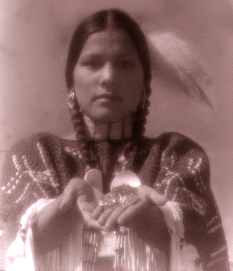    |
Today there are more than half a million Indians in the United States and millions more elsewhere in the Americas. Still trying to cope with adjustment to white civilization, they are in all stages of development, from the most primitive to the most sophisticated. In the United States, they still speak more than 100 different languages. Economically they range from pauperism to affluence. A few have made money from oil and other natural sources found on their lands, but many thousands live at near-starvation levels. Some are educated and completely assimilated in white society; many live in nearly complete isolation from non-Indian Americans. Relocation programs have taken hundreds of Indians to work in cities; thousands of others cling to the security of their reservations, hoping to gain education and assistance necessary to develop the resources of their lands and become self-sustaining. Generally, the Indians are still proud of their traditions and heritage, and many of them resist giving them up or allowing them to be submerged or corrupted by white civilization. But Indians generally also recognize that their standards of living must be raised. Without giving up their unique cultural heritage, they have organized into tribal councils to try to help the federal government settle on long-range programs of education, health services, vocational training, resource planning, and financial credit that will assist them to solutions of the problems that have beset them for so many sad decades.
Nowadays, there exist about 300 federal reservations in the United States, with a total of 52,017,551 acres held in trust by the federal government, the large majority west of the Mississippi. There are also 21 state reservations, most of these in the East. Some reservations are restricted to one tribe, others are jointly held. Some reservation land is owned, rented and occupied by non-Indians. The largest reservation is held by the Navajo tribe. Although the reservations are sovereign nations, the People are also considered U.S. citizens.
In the contemporary relationship between the federal government and federally chartered tribes, as it has reached the present through a number of historical stages, the United States Congress with its powers to ratify treaties and regulate commerce is the trustee of the special Indian status. The trusteeship involves protection of Indian property; protection of Indian right to self-government; and the provision of services necessary for survival and advancement. In the commission of its trusteeship, Congress has placed the major responsibility for Indian matters in the Department of Interior and its subdivision the Bureau of Indian Affairs. In addition to the central office in Washington D.C., the BIA maintains regional offices in 12 states, mostly in the West, with agencies on particular reservations as well. Many Native Americans have positions in the BIA, but relatively few are at the highest positions.
Indians are free to live anywhere. It is estimated that one-third to one-half of the Indian population in the United States now lives in cities. The greatest concentration of urban Indians, about 60,000, are found in the Los Angeles - Long Beach area of California. Other cities with large Indian populations are San Francisco - Oakland in California, Tulsa and Oklahoma city in Oklahoma, New York City and Buffalo in New York, Phoenix and Tucson in Arizona, Minneapolis - St. Paul and Duluth in Minnesota, Seattle - Everett in Washington, Rapid City in South Dakota, Denver in Colorado, Milwaukee in Wisconsin, Portland in Oregon, Albuquerque in New Mexico, and Nome, Bethel and Barrow in Alaska.
On the positive side of the Native North American situation, Indian art is enjoying a renaissance. First in the realm of Indian arts and crafts, where many Indians, using traditional techniques and forms, have found reliable markets among both tourists and serious collectors; and second, in the realm of fine arts, where Indian painters and sculptors, in a burst of new esthetics that blend the traditional with the modern, have developed international reputations. Native North American culture in both the United States and Canada is a national treasure. Its renewal is everyone’s renewal.
In Mexico the Indians called indígenas - estimated 15 percent of the total population - are direct descendants of the Aztec, Maya and other ancient civilizations. Some are small groups living in self-sufficient isolation, others occupy large territories. While it is convenient for the sake of categorization to lump all Indians together, Mexico’s native peoples are characterized by linguistic and cultural differences that can be very distinct. The status of indígenas in today’s Mexico, unfortunately, is not much better than it was during the colonial era. Poverty is a chronic, debilitating fact of life for more than three-quarters of the country’s Indian communities. Life is very hard for "Mexico’s most forgotten people", as many indígenas refer to themselves, but their concerns have garnered international attention and forced ongoing government negotiations.
In Peru about half of the population is Indian, descendants of the Incas. These people still practice their own language, culture and religion. Their situation in the Peruvian society is similar to "Mexico’s most forgotten people".
Indians everywhere represent heroic and romantic historical figures who held out, through skill and courage, against overwhelming forces. They also represent beings who were in tune with themselves, one another, and nature. Balance and harmony are concepts often applied to Indian ways of life, as well as to Indian inner life. For societies alarmed by ecological damage from modern technologies, Indian coexistence with the natural environment serves as a model for survival.
|
7.9.14
Não esqueçamos os ameríndios
Assinar:
Postar comentários (Atom)


Nenhum comentário:
Postar um comentário